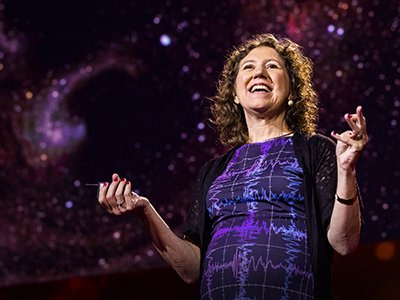
For Gabriela González G’95, life is a honeymoon—to quote a recent country hit. No sooner had the renowned physicist returned from her own honeymoon than she and her husband, fellow Argentinian theorist Jorge Pullin, moved the party to Syracuse in 1989. Swapping modest digs in Central Argentina for similar ones in Central New York, the newlyweds found themselves at the future epicenter of gravitational-wave astronomy.
At Syracuse, Pullin worked as a postdoc, while González chipped away at a Ph.D., mastering the finer points of spacetime measurement—a mathematical model supporting Einstein’s general theory of relativity, which posits that Earth’s rotation warps space and time.
Spacetime also underpins González's prize-winning research into gravitational waves, which are invisible “ripples” caused by the collisions of dense, massive objects, such as black holes.
From 2011-17, González was spokesperson of the Laser Interferometer Gravitational-Wave Observatory (LIGO) Scientific Collaboration, an international community of researchers that hunts for gravitational waves. González’s involvement with LIGO led to her induction into both the National Academy of Sciences (NAS) and the American Academy of Arts and Sciences, as well as her inclusion on Nature magazine’s 2016 list of 10 people who matter in science.
“Jorge and I like to think we have proven Einstein wrong, since he said his theory was not to blame for people falling in love,” jokes González, who, along with Pullin, is on the physics faculty at Louisiana State University. “When I was at Syracuse, I never thought that learning how to measure spacetime would make scientific history. It’s rewarding to do what you love.”
The College of Arts and Sciences (A&S) recently caught up with González, who admits that her honeymoon is far from over.
To read the full interview, visit A&S News
